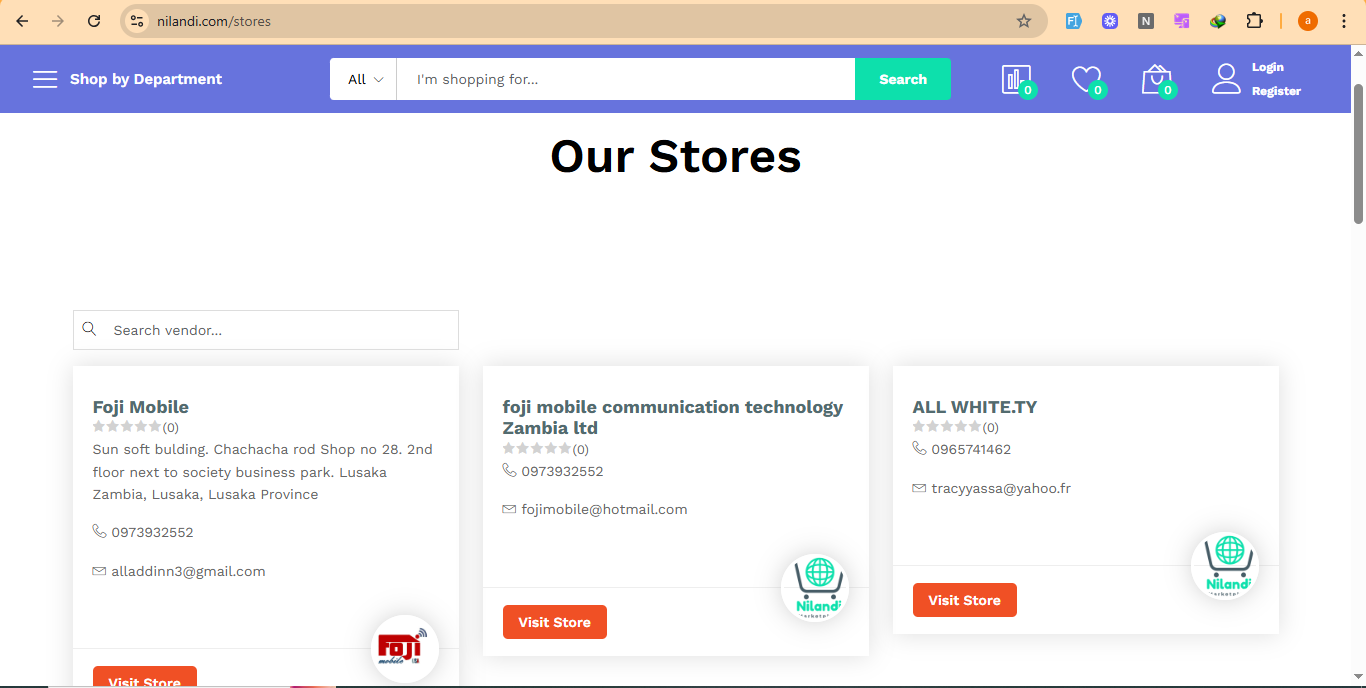About the Project
- Technology Stack: A multi-seller e-commerce platform built with standard web technologies (HTML, CSS, JavaScript) and a server-side backend to manage dynamic content, user accounts, product catalogs, and orders. The site supports responsive layouts, category filters, and seller modules for listing products.
- Operations Management: Enables day-to-day e-commerce operations: sellers can list goods across categories (electronics, clothing, household, etc.), buyers can browse, filter, add to cart, and checkout. The site also allows “Stores” pages where individual sellers are listed.
- Relationship Management: Facilitates relationships among buyers and sellers via:
- User registration / login and “Register” pages for new users or sellers
- Store pages to give visibility to individual sellers and contact channels
- Contact information and support channels for customer inquiries
- Business Data Management: Manages a variety of data sets, including:
- Product catalogs (names, descriptions, prices, categories)
- Seller profiles, store listings, and contact details
- User account information, login state, and purchase orders
- Order and transaction records, inventory status, and product stock management
- Admin Panel: Behind the scenes (not publicly visible) there is likely an administrative backend where super admins can:
- Approve and manage sellers, stores, and product listings
- Oversee orders, disputes, and payments
- Manage site content (About, Terms, Contact) and global settings
- Modular Architecture: The platform is structured into modules such as: product listing & catalog, shopping cart & checkout, seller store management, user accounts, filtering & search, and content pages (About, Contact). This modularity allows new features (e.g. reviews, advanced analytics, promotions) to be added later without overhauling the core.
- Free and Easy to Use: For end users, the interface is intuitive—clear navigation (Shop, Categories, Store pages), product filtering, cart mechanism, and shopping flow. For sellers and admins, the modular design and CMS-style control likely make it manageable to add or update products, stores, and content without deep technical knowledge.


